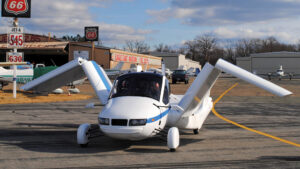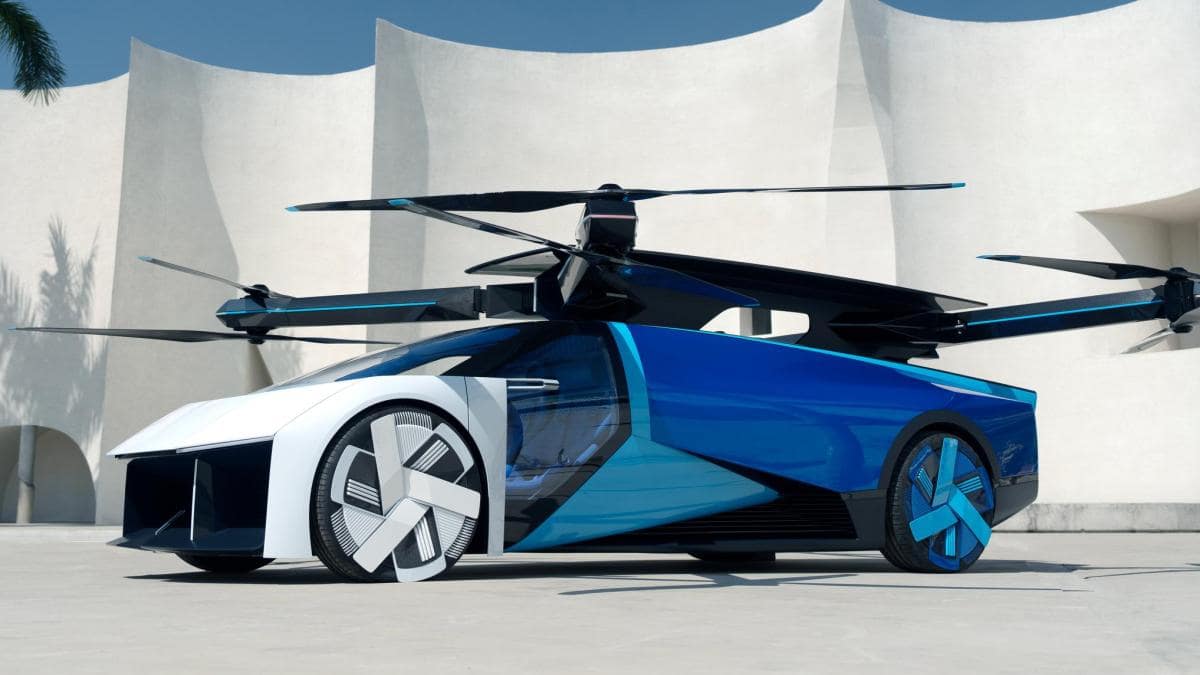The concept of flying cars has long been a staple of futuristic visions, seen in everything from science fiction novels to blockbuster films. Once considered an unrealistic dream, flying cars are now rapidly transitioning from fantasy to reality. With advancements in technology and the growing interest in urban air mobility, the future of flying car travel is closer than ever. Major companies and startups alike are racing to develop viable flying vehicles, and some prototypes have already taken to the skies. As this groundbreaking mode of transportation becomes more plausible, it’s time to consider how we can prepare for a world where flying cars are part of everyday travel.
Understanding Flying Cars
Flying cars, also known as eVTOLs (Electric Vertical Take-Off and Landing vehicles), represent a hybrid between aircraft and automobiles. These vehicles are designed to take off, fly, and land like helicopters, but with the size and convenience of a personal car. eVTOLs aim to offer fast, efficient transportation over short to medium distances, particularly in congested urban areas. Many designs are electric, making them eco-friendly and a potential solution to both traffic jams and carbon emissions. Companies such as Uber, Airbus, and smaller startups like Terrafugia and Volocopter are leading the charge in developing these vehicles.
When Will Flying Cars Be a Reality?
While it’s difficult to predict an exact timeline, experts believe that commercial flying car travel could become a reality by the early 2030s. Several companies are already conducting test flights, and regulators are working on establishing guidelines and standards for airspace usage and safety. In fact, some limited trials and demonstrations have already occurred in select cities, where people have seen firsthand how these vehicles might operate in the future.
As flying car travel inches closer to becoming mainstream, individuals, governments, and industries must begin preparing for the future of air-based mobility. Here’s how you can get ready for flying car travel:
1. Stay Informed About the Technology

Keep an eye on regulatory developments as well, as aviation authorities will play a significant role in determining how flying cars will be integrated into public airspace. Agencies like the Federal Aviation Administration (FAA) in the United States and the European Union Aviation Safety Agency (EASA) are already researching how to safely integrate flying cars into existing air traffic systems.
2. Understand Air Mobility Infrastructure
One of the biggest challenges for flying cars isn’t just the technology itself, but the infrastructure needed to support it. Current cityscapes and road networks are not built with flying cars in mind, so new solutions will need to be developed to accommodate them.
For example, flying cars will require designated takeoff and landing zones, often referred to as “vertiports.” These vertiports may be built on rooftops, at airports, or in specially designated areas throughout cities. Preparing for flying car travel means understanding how this infrastructure will develop in your area. Municipalities and urban planners will likely need to rethink public spaces to make room for these vertiports, and large companies may even invest in private vertiports at corporate headquarters.
Additionally, flying cars will require advanced air traffic management systems. Unlike traditional planes that fly at high altitudes with clearly designated air routes, flying cars will need to navigate more complex, lower-altitude environments. Companies are working on creating automated air traffic control systems powered by artificial intelligence (AI) that will ensure safe flight paths for these vehicles. Familiarizing yourself with how these systems operate will give you a better sense of what to expect when flying cars arrive.
3. Prepare Financially

While flying cars are no longer science fiction, they won’t be cheap in the early stages. Much like electric vehicles and autonomous cars, flying cars will likely be expensive when they first hit the market. Early adopters will need to prepare financially for the potential costs of owning or using a flying car. The price tag could range from hundreds of thousands to millions of dollars for personal ownership.
However, most experts predict that flying cars will initially be offered as a service, similar to ride-sharing platforms like Uber. This will make flying car travel more accessible to the general public without the need to purchase a vehicle outright. Nevertheless, the cost per ride could still be higher than traditional ride-sharing options. Saving for future air mobility services or even investing in the flying car industry could be ways to financially prepare for this new transportation mode.
4. Learn New Skills
Flying car travel will bring with it a new set of skills for passengers and operators alike. While many flying cars are being designed to operate autonomously, there will likely still be options for manual control. This means that learning to pilot a flying car could become a sought-after skill in the coming years. Flying car pilots will need to understand basic aviation principles, air traffic rules, and the operation of eVTOLs.
Even for those who don’t plan on flying the vehicles themselves, passengers will need to become familiar with new safety protocols. Riding in a flying car will require an understanding of emergency procedures and navigation in a three-dimensional space. Taking the time to learn these skills in advance will help ensure a smooth transition to flying car travel.
5. Consider Environmental Impact
Flying cars have the potential to be an environmentally friendly alternative to traditional transportation, especially in cities where traffic congestion leads to high emissions. Many flying cars will run on electric batteries, making them cleaner than gasoline-powered cars. However, the environmental benefits will depend on how efficiently they are used and how clean the electricity is that powers them.
Individuals who are environmentally conscious should begin thinking about how flying cars will fit into a sustainable future. Supporting the development of renewable energy sources, such as solar and wind power, will be crucial for making flying car travel as green as possible. Additionally, users of flying cars can adopt eco-friendly habits, such as using air travel only when necessary or choosing ride-sharing options to reduce the number of vehicles in the air.
6. Adapt to a New Way of Living

Flying car travel won’t just change how we get from point A to point B; it could fundamentally transform the way we live and work. With faster travel times, cities may expand outward, reducing the need for centralized living in urban cores. People could live farther from their workplaces, yet still commute quickly using flying cars.
The tourism industry may also be revolutionized. Flying cars could make it easier to access remote areas, opening up new possibilities for vacation destinations and short-term travel. Planning for how these changes might impact your daily life will help you stay ahead of the curve as flying car travel becomes a reality.
Conclusion
The future of transportation is evolving, and flying cars are poised to play a major role in this transformation. While it may take a few more years for flying cars to become widespread, it’s never too early to start preparing. By staying informed, adapting to new infrastructure, learning new skills, and considering the environmental and financial aspects, you can ensure that you’re ready to embrace the future of flying car travel. With the advancements being made today, the sky is quite literally the limit!

